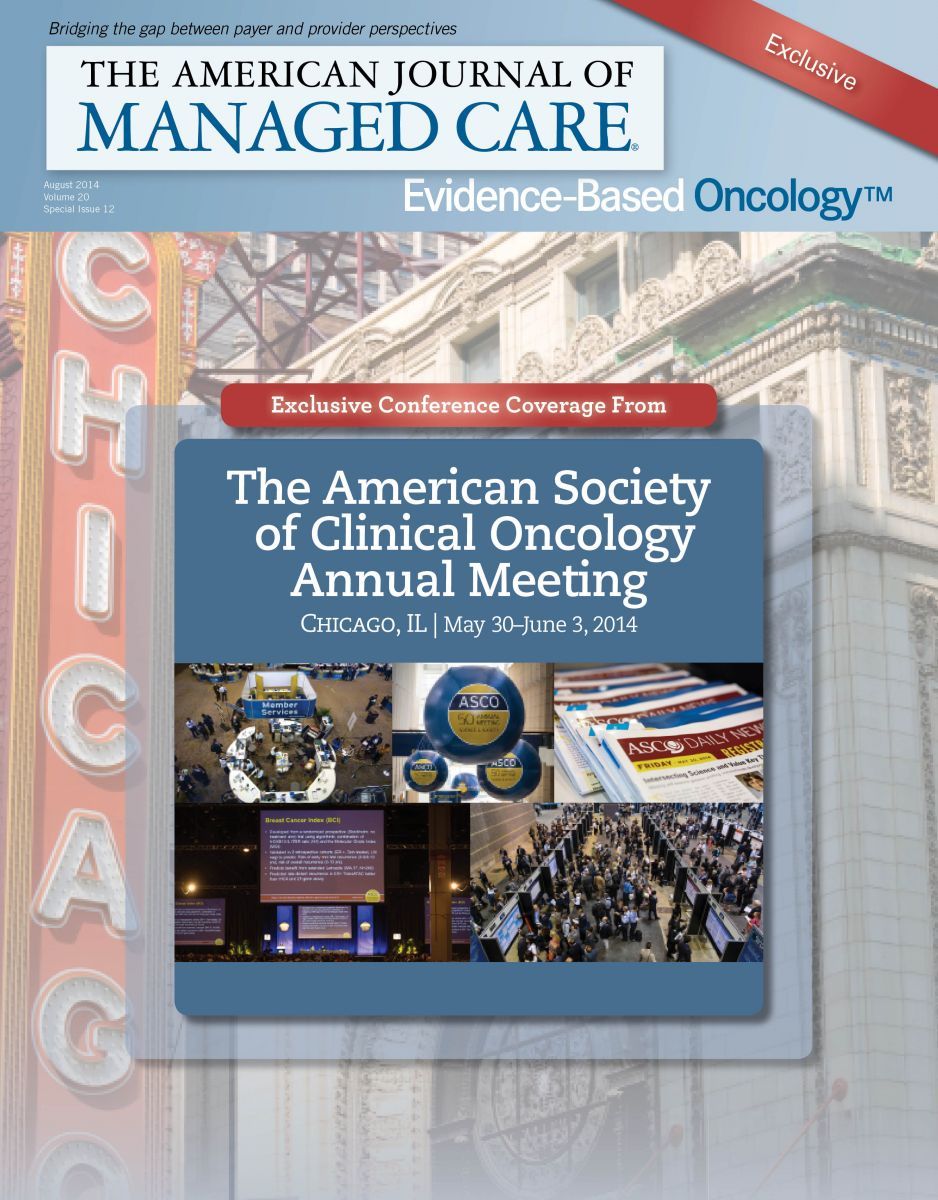- Center on Health Equity & Access
- Clinical
- Health Care Cost
- Health Care Delivery
- Insurance
- Policy
- Technology
- Value-Based Care
Cancer Care in the United States: The Path Ahead
The debate is global: how long can healthcare systems sustain the continually rising costs of care? Pharmaceutical and biotechnology companies are investing heavily in research to develop new molecules with improved efficacy and minimal adverse effects, novel drug delivery technologies, and diagnostic tests that can help personalize therapy as well as monitor response to therapy, especially in oncology.
Here’s the big picture: a report by the Pharmaceutical Research and Manufacturers of America (PhRMA) published last year indicated that it takes an average of 10 to 15 years to develop 1 drug molecule.1 Furthermore, drug development costs have experienced a steep rise over the past few decades: estimated at $140 million back in the 1970s, recent assessments reveal that the cost to develop 1 drug molecule now ranges from $1.3 to $11 billion.1,2 R&D spending, meanwhile, has also seen a steady increase—PhRMA projected its average per member cost, which was $2 billion in 1980, to be $48.5 billion for 2012.1 Like any other industry, the pharmaceutical sector seeks a return on its investments. So what does the spending translate into? Rising drug costs.
However, the discussion, especially in the oncology realm, is about whether the modest increase in benefit observed with some of the newer therapies—sometimes a few added weeks or months of life—justifies the cost (Figure 1). Back in 2012, Memorial Sloan Kettering Cancer Center took a stand and chose Avastin (which costs about $5000 per month) over Zaltrap (which costs about $11,000 per month) for treating patients with advanced metastatic colorectal cancer. Zaltrap, developed by Sanofi/Regeneron, was no more effective than Genentech’s Avastin. Subsequently, Sanofi was forced to reduce the price of Zaltrap by 50% in the United States.3
There is no arguing that this tremendous investment in cancer care has paid dividends for patients. Since 1980, 83% of the improvement in the life expectancy of cancer patients has resulted from new treatments, which include novel medicines.1 Innovative approaches such as RNAi, cancer vaccines, and immunotherapy (both monoclonal antibodies and the new immunooncology inhibitors) are transforming the therapeutic spectrum. Screening and early detection have improved outcomes, at least for certain cancer types. The National Breast and Cervical Cancer Early Detection Program (NBCCEDP), run by the CDC following a Congressional directive, provides screening and diagnostic services to low-income and uninsured women throughout the country. Since 1991, the program has diagnosed more than 62,121 cases of breast cancer, 3458 cases of invasive cervical cancer, and 163,548 premalignant cervical lesions. Early detection in these 2 cancer types have definitely proved beneficial.4
Drug development, of course, is just 1 variable in the equation of cancer care. Other treatment-associated costs, including doctor visits, hospitalization, and out-patient services such as laboratory tests, complete the picture.
The Affordable Care Act of 2010 supported the development of accountable care organizations (ACOs), with this objective: collaborative and coordinated care to improve quality, value, and health outcomes for patients. ACOs are expected to greatly impact Medicare spending. A feared potential drawback, however, is provider consolidation. This could drive up the cost of care, with the patient ultimately footing the bill (Figure 2).5
However, providers can play a significant role in reducing these costs, as was argued during the session “Cancer Overdiagnosis and Overtreatment, or Appropriate Attention to Early Disease?” on June 1, 2014, at the annual meeting of the American Society of Clinical Oncology (ASCO) (see page SP285). To this end, ASCO’s Value of Cancer Care Task Force developed a list of opportunities for physicians to improve the quality and value of care delivered, as part of the Choosing Wisely campaign.6
EBO
The debate will persist about choices made by physicians while treating an individual patient versus policies that govern the patient population as a whole. During a session that discussed the value of care (see page SP283), Daniel P. Sulmasy, MD, PhD, professor of medicine and associate director at the MacLean Center for Clinical Medical Ethics at the University of Chicago, said, “Population medicine cannot be practiced at the bedside. The goal is to improve the life of an individual patient and not the population. Bedside rationing and providing financial incentives can threaten the integrity of medicine and also undermine the patient’s trust.” References
1. 2013 profile: biopharmaceutical research industry. PhRMA website. http://www.phrma.org/sites/default/files/pdf/PhRMA%20Profile%202013.pdf. Accessed July 30, 2014.
2. Herper M. The truly staggering cost of inventing new drugs. Forbes website. http://www.forbes.com/sites/matthewherper/2012/02/10/the-truly-staggering-cost-of inventing-new-drugs/. Published February 2, 2012. Accessed July 30, 2014.
3. Boltz K. Cost challenges in developing new oncology drugs. OncLive website. http://www.onclive.com/publications/oncology-business-news/2013/november-2013/cost-challenges-in-developing-new-oncology-drugs/1. Published December 4, 2013. Accessed July 30, 2014.
4. National Breast and Cervical Cancer Early Detection Program (NBCCEDP). CDC website. http://www.cdc.gov/cancer/nbccedp/about.htm. Updated March 7, 2014. Accessed August 3, 2014.
5. Accountable care organizations. America’s Health Insurance Plans website. http://www.ahip.org/Issues/ACOs.aspx. Accessed July 31, 2014.
6. New ASCO Choosing Wisely list details five cancer tests and treatments routinely performed despite lack of evidence. Choosing Wisely website. http://www.choosingwisely.org/new-asco-choosing-wisely-list-details-five-cancer-tests-and-treatments-routinely-performed-despite-lack-of-evidence/. Accessed July 31, 2014.


